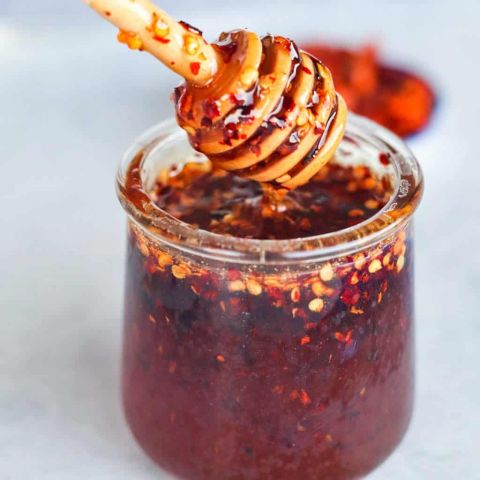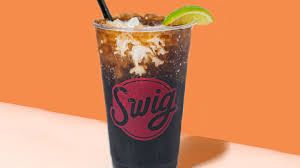
Vol. III, No. 1, January 2025
2025 food trends
It's that time of year when all the experts peer into their crystal balls to predict the hot trends of the new year, and the restaurant industry is no exception. This article will dive into some of the food and beverage industry leaders' predictions for 2025 to discover upcoming trends and how you might integrate (and profit from) them at your farm.
Global flavor profiles
Global flavors still rule the hot trends list, with Korean and Vietnamese scoring slots 3 and 5 of The National Restaurant Association's What's Hot top ten trends, while pickled and fermented foods come in at number 7. An excellent way to market more unfamiliar flavor profiles to the mass market is to incorporate them into more traditional fare. Some examples include:
- Bahn Mi Burger - A classic burger topped with pickled carrots, cilantro, cucumber, and spicy mayo. Serve with a side of sriracha or hoisin sauce.
- Korean BBQ pulled pork sandwich - Slow-cooked pork tossed with Korean BBQ sauce and topped with Kimchi.
- Bulgogi tacos - Soft corn tortillas filled with bulgogi (Korean marinated grilled beef) topped with Kimchi, spicy mayo, and sesame seeds.
- Vietnamese pizza - Traditional thin crust pizza with a spicy, creamy base (try mayo with sriracha, lime juice, and a dash of hoisin sauce) topped with grilled chicken, pickled carrots, cucumber and cilantro, jalapenos, and green onions, topped with a drizzle Nuco cham (a Vietnamese dipping sauce) and sesame seeds.
If you want to be more adventurous, Tastewise's "Flavor Chase: The Most Disruptive Flavors of 2025" predicts that traditional Middle Eastern spices, Filipino cuisine, and Asian street food will be popular trends in 2025. If you are unsure how to incorporate these flavors into your menu, why not ask AI? Tastewise predicts that AI will have a significant role in food trends in 2025, both in food recommendation and enhanced marketing. I asked ChatGPT for a recommendation for American-style comfort food using Filipino flavors and received a recipe for Adobo fried chicken with Ube slaw.
In their blog "Embracing Craveability: The art of crafting irresistible food and beverages," Kerry group lists creating a sense of adventure as one of their four facets of craveable food, cementing global foods as an important trend to watch for in 2025.

- Sweet meets spicy - Another chart-topping flavor (number 4 on the NRA's Top 10) is hot honey, indicating that "swicy" foods aren't going anywhere anytime soon. Hot honey and, more broadly, a sweet and spicy flavor profile can easily be incorporated into items such as:
- Sweet and spicy BBQ sauce featuring hot honey - on barbequed meat or as a topping on a BBQ hamburger.
- Hot honey wings - Buffalo wings tossed in hot honey or as a dipping sauce.
- Hot Honey Chicken - Hot honey pairs perfectly with chicken. Add it to a chicken sandwich or drizzle it over chicken and waffles to give these old favorites a spicy twist. It also makes a tasty addition to honey mustard dressings and dipping sauces.
New and trendy flavor profiles make great options for limited-time offerings (LTOs), and LTOs drive fattendance and sales. LTOs are a great opportunity to lure in new customers and give repeat customers a reason to return.
Sustainability/Local
Flavors aren't the only things topping the charts for 2025. The National Restaurant Association's number one trend is one we have seen growing for several years: sustainability & local sourcing. Environmental concerns are still at the top of people's minds, influencing everything from brand loyalty to the foods they eat. We have previously reported on the influence of sustainability on consumer spending. According to a 2023 PDI survey, the majority of people across all ages, incomes, and political spectrums are willing to spend more for sustainable products. You can read more here. This trend is a definite advantage for farms serving food that incorporates their livestock and crops.
If you are already growing and/or sourcing local or sustainable products at your farm, make sure to let your customers know. If not, now is the time to look at incorporating them into your menu. Here are some ways to include local and sustainable practices:
- Partnering with other local farms for seasonal produce and dairy.
- Educating consumers about the environmental benefits of sourcing locally, such as minimizing carbon footprint and contributing to local economies.
- Hosting farm-to-table events, highlighting local and/or seasonal food and any sustainable practices used on your farm.
Local sourcing goes hand-in-hand with seasonal sourcing, so take advantage of LTOs' use of seasonal, locally sourced produce. This is especially important at agritourism venues. We encourage our agritourism clients to emphasize seasonal produce in their food offerings, including hosting seasonal food festivals on their property. Here are a few interesting options, including some from one of our clients' recent blueberry festival.
Blueberries, strawberries, and other berries are excellent candidates for sweet offerings, such as donuts, ice cream, and cobbler. But don't overlook the savory options that these fruits afford. Such as:
- Blueberry BBQ sauce
- Strawberry Caprese Salad
(Strawberries and mozzarella drizzled with balsamic vinegar and topped with basil) - Grilled cheese with jam
(blueberry and blackberry are excellent options, as is apple chutney) - Blueberry-jalapeno cream cheese dip
Or, if you are really daring, try one of our client's blueberry jam smashburger with peanut butter and bacon!
Another popular option among our farmer clients is Mexican street corn: grilled cob of corn coated in a mixture of Mexican crema (or sour cream), mayonnaise, lime, and cotija cheese, garnished with cilantro and Tajin. However, any local vegetable, from asparagus to zucchini, can liven up a menu and introduce local or sustainable produce. And, of course, local apples and pumpkins make great additions to fall menus.
The bottom line: Sustainable and local foods create a loyal customer base who will seek out like-minded businesses and even spend more. In addition, seasonal items are by nature limited-time offerings LTOs) which can both drive traffic and be used to theme festivals, farm-to-table dinners, or other events.
Healthy Hydration
According to Tastewise, interest in hydrating food and beverages has increased by 12.8% in the last year, making it unsurprising that healthful beverages are predicted to be hot in 2025. "Wellness drinks" garnered the 8 th slot in the NRA's 2025 trends, and Tastewise sees a bright future for non-alcoholic beverages that promote health benefits such as hydration and improved sleep. While this trend encompasses many different types of beverages perceived as enhancing one's well-being, the ones most relevant to our agritainment clients are low and non-alcoholic beverages. This wellness trend correlates with our research on alcohol consumption, which we have written about several times in our newsletter.
A growing number of young adults are choosing to limit or abstain entirely from alcohol. According to a 2024 Gallup poll, 65% of young adults 18-34 believe alcoholic consumption negatively affects their health. Looking at the general population, the percentage of people who believe moderate drinking is harmful to your health has increased over 50% in the last 2 decades, from 29% in 2001 to 45% in 2024. These consumers are looking for quality, unique, and appealing beverage options to fill that void. And there are a number to choose from.
Alcohol-free beers. If you haven't tried any before, check out the award-winning Wild Run IPA by Athletic Brewing Co., the top-selling non-alcoholic beer brand in the U.S. But there are countless other brands, from the non-alcoholic options at major brewers such as Budweiser, Guinness, and Corona to local craft beers such as St. Louis' Well-Being Brewery, Brooklyn Brewing, and California's Bravus Brewing. N.A. beers run the gamut from pale pilsners to rich stouts; many have seasonal varieties.
Mocktails: Once the province of children, mocktails now hold their own with all ages. Mocktails are often made with herbs and syrups that provide a complex flavor profile with or without adding non-alcoholic spirits. Check out this recipe for a non-alcoholic Gin & Tonic:
- 2 ounces juniper syrup
- 1 ounce lemon juice, freshly squeezed.
- 4 ounces of high-quality tonic water (such as Fentimans)
- Garnish: lemon wheel
Tip: Adding ingredients such as ginger or juices like cranberry, tart cherry, or pomegranate will increase your drink's perception of it as healthy and delicious.

The Founder: The original dirty soda made with Diet Coke, heavy cream, coconut syrup, and lime juice.
Dirty Sodas: Another alcohol-free beverage option that has exploded on the scene is dirty sodas. The dirty soda trend originated in Mormon communities in 2010 and went mainstream in 2022. What is dirty soda? It uses a standard soft drink such as Diet Coke or Dr. Pepper as a base with additions such as flavored syrups, fruit purees, and creamers. Swig, the largest dirty soda retailer, had 61 soda shops nationwide in 2023 and is expanding with 250 more locations in the coming years. So, if you haven't tried one, chances are you will see them soon. To learn more, check out this article in our Leisure eNewsletter from last month.
The bottom line: Non-alcoholic beverage offerings will attract the ever-growing cohort of sober or sober curious consumers. Whether non-alcoholic beer, mocktail, or dirty soda, these non-alcoholic beverages can be sold at a higher price point, command a higher profit than a regular soft drink, and increase per capita sales. Adding ingredients perceived as beneficial to one's health and well-being will further increase the value of the beverages to your customers.
While we can't predict the future, we can say that embracing these trends can help you stay ahead of the curve in 2025 and boost foot traffic and loyalty at your farm. Start experimenting with these flavor profiles today to see what excites your customers-and your bottom line.
Here's to a happy and flavorful 2025!
Subscribe to Agritourism Today



